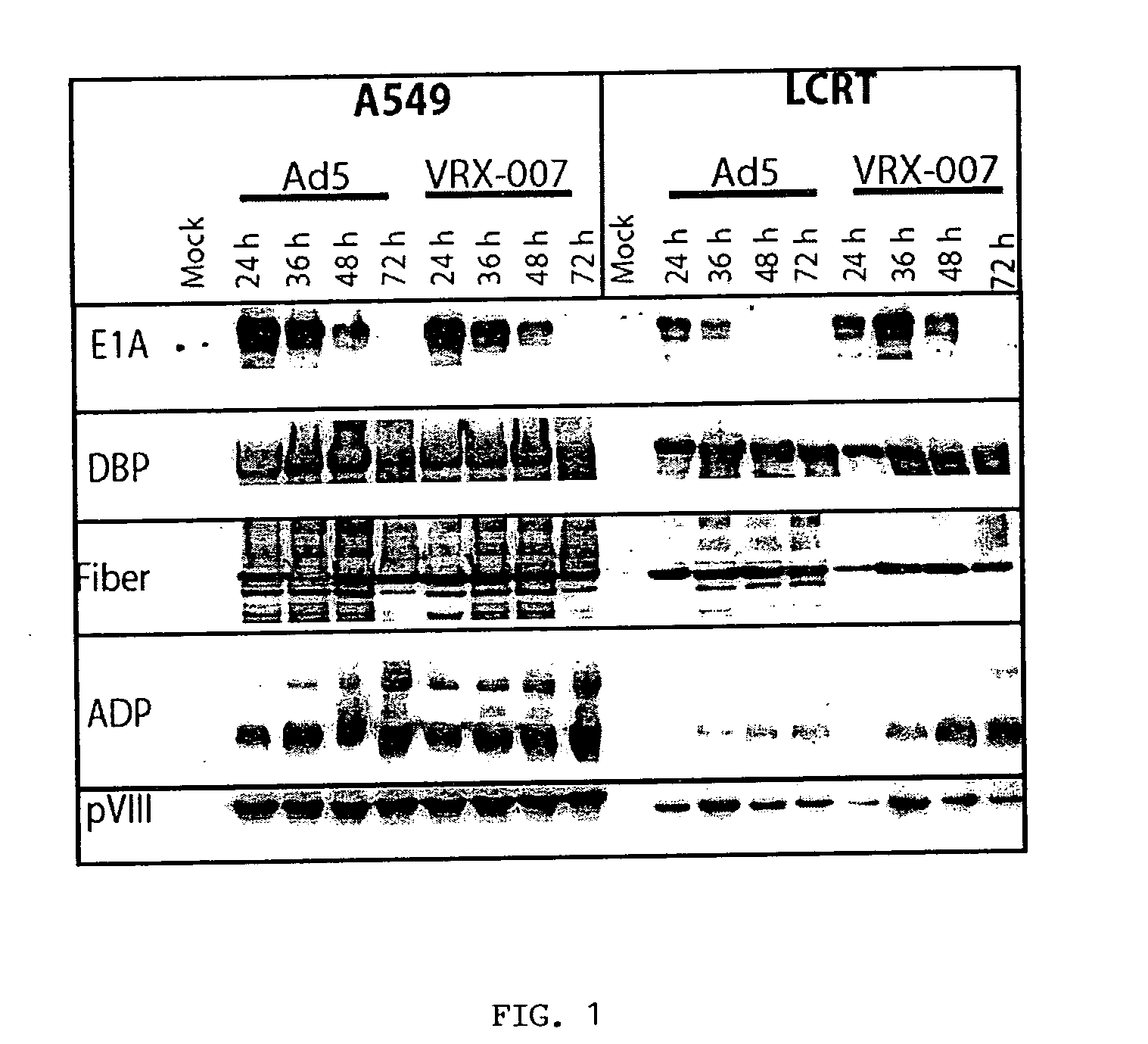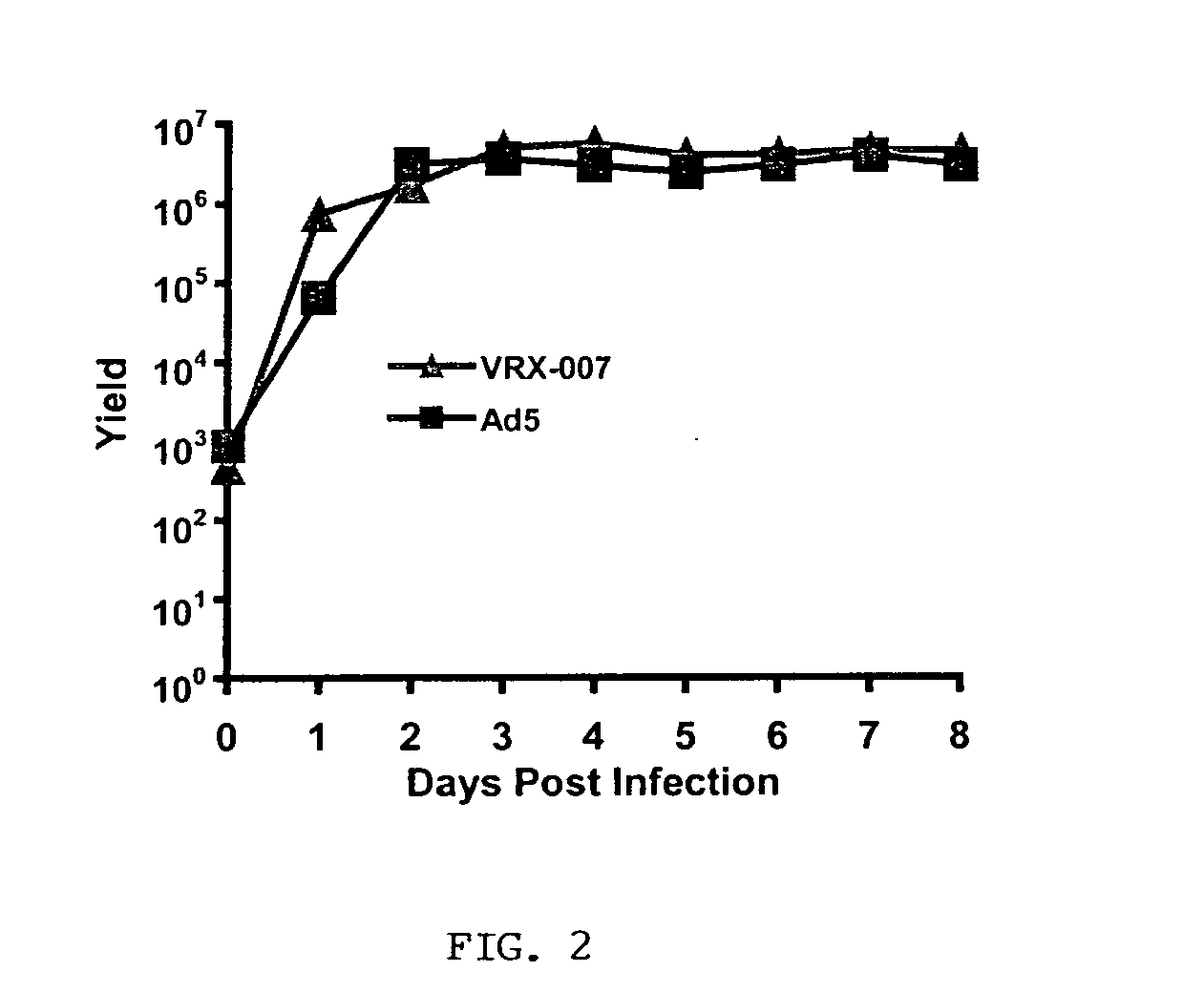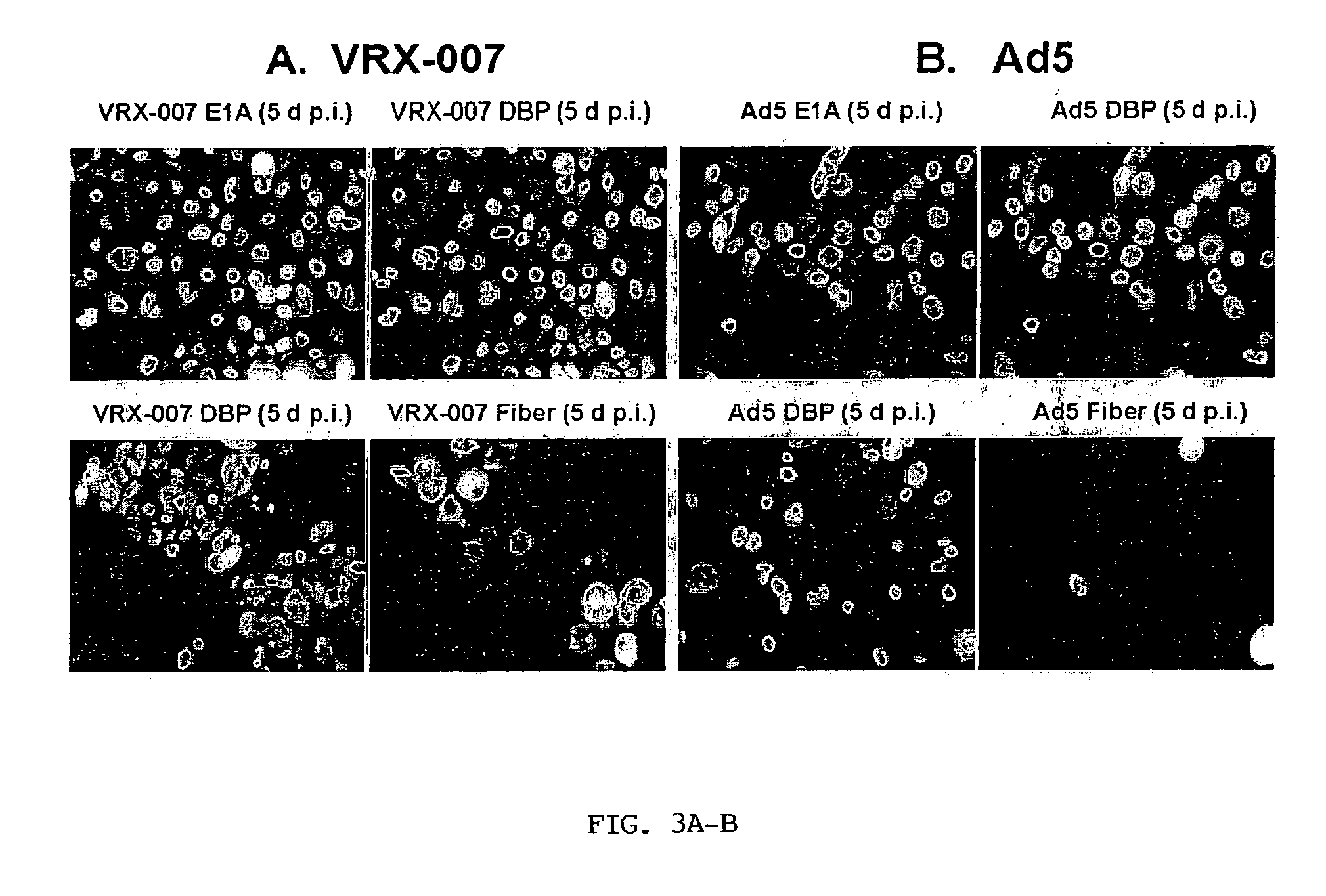Models for viral-based cancer therapy
a cancer therapy and model technology, applied in the field of virology, oncology and pathology, can solve the problems of only investigating the effect in humans and consuming a lot of resources, and achieve the effect of improving the effect of cancer treatmen
- Summary
- Abstract
- Description
- Claims
- Application Information
AI Technical Summary
Benefits of technology
Problems solved by technology
Method used
Image
Examples
example 1
Cotton Rat
[0125] VRX-007 productively infects cultured LCRT cotton rat cells. VRX-007 is a recombinantly-engineered replication-competent Ad5-derived vector that overxpresses ADP in relation to wild-type Ad5. The inventors have demonstrated that Ad5 and VRX-007 infect, replicate in, and destroy LCRT cells in tissue culture. Three sets of experiments were performed to obtain this evidence. The first set of experiments assessed the ability of Ad5 and VRX-007 to establish an infection and then enter into the late phase of infection in the LCRT cell line. Lysates from infected cells were prepared and analyzed by western blot for the expression of a variety of Ad-encoded proteins that are expressed during the early or late phases of infection. For comparison, the inventors also prepared lysates from infected human A549 cells, a cell line that is permissive for Ad infection. The results show that, in LCRT cotton rat cells, the early proteins E1A and DBP are expressed at a level and in a ...
example 2
Syrian Hamster
[0138] Infection of Syrian hamster cell lines. An initial experiment was designed to test whether Ad is capable of infecting Syrian hamster cell lines and progressing into late infection. For this experiment, each of four cell lines was infected with VRX-007 or Ad5 at 50 PFU per cell. At 24 h p.i., cells were fixed and immunostained for E1A (an early Ad protein) and DBP (Ad DNA Binding Protein); they were also stained with DAPI (a DNA intercalating dye) to visualize the nuclei. At 48 h p.i., cells were fixed and stained for fiber protein (a late Ad protein that is a component of the capsid) and DBP.
[0139] As shown in FIG. 7, the majority of the cells were infected with VRX-007 in each of the four cell lines, as demonstrated by the percentage of cells that were E1A-positive at 24 h p.i. DBP staining was also seen in most of the cells at 24 h p.i. At 48 h p.i., three of the cell lines (PC1, HaK, and DDT1 MF-2) demonstrated fiber staining, indicating progression into la...
PUM
| Property | Measurement | Unit |
|---|---|---|
| volume | aaaaa | aaaaa |
| volume | aaaaa | aaaaa |
| volume | aaaaa | aaaaa |
Abstract
Description
Claims
Application Information
 Login to View More
Login to View More - R&D Engineer
- R&D Manager
- IP Professional
- Industry Leading Data Capabilities
- Powerful AI technology
- Patent DNA Extraction
Browse by: Latest US Patents, China's latest patents, Technical Efficacy Thesaurus, Application Domain, Technology Topic, Popular Technical Reports.
© 2024 PatSnap. All rights reserved.Legal|Privacy policy|Modern Slavery Act Transparency Statement|Sitemap|About US| Contact US: help@patsnap.com










